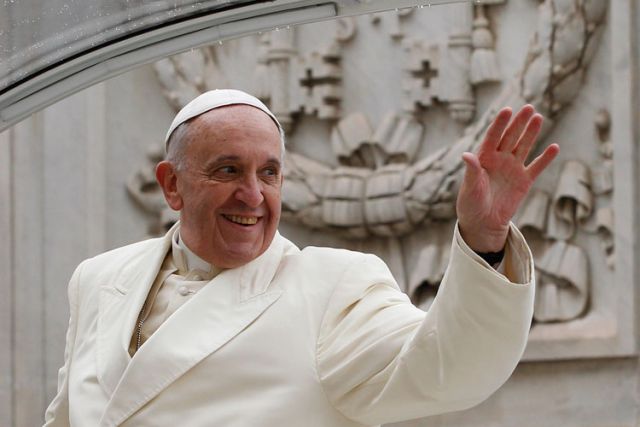The 7,700-word cover story entitled “The Times They are A-Changing: Inside the Pope’s gentle revolution” makes the point that Francis is hip, rather cool and “revolutionary.” He is the first pope to grace the cover of Rolling Stone, which typically features pop culture icons.
The author clearly did a lot of research and unearthed interesting bits in the life of the former Jorge Mario Bergoglio, 77, which have not been widely reported since Francis’ election last March. For example, shortly after Bergoglio was appointed archbishop of Buenos Aires in 1998, he virtually turned part of the palatial bishop’s estate into a food bank depot with stacks and stacks of boxes stuffed with food and clothing for the poor.
Make no mistake, the article is an interesting read about a fascinating man. But, this reader finds three important problems with it.
First, while it purports to say Francis’ style is positive and improving the Catholic Church, overall it is rather negative towards the Church. The author drums up stories of bad popes from 700-800 years ago to attack the papacy. He delves into rich Catholics being so mean-spirited that they threaten to withhold donations to pay for needed restorations of prized Church holdings such as St. Patrick’s Cathedral in New York. He makes some sort of point that poor Catholics are being drawn to the Vatican by Francis and they don’t seem to have the means to buy trinkets and souvenirs from peddlers.
Each negative jab is rather minor, but as they stack up one gets a feeling there is ulterior motive to mock Catholicism.
Second, it is an American publication so it must play to its American readers, but the U.S. references are simply too numerous and over the top. We’re reading about the life of an Argentinian-born pope in Rome who is leading more than one billion Catholics around the world and yet the American allusions range from Mr. Smith Goes to Washington to Sarah Palin, Rush Limbaugh and more.
We even get a comparison of Pope Francis to Bill Clinton. Please! That’s like comparing delicious la cucina romana (Roman food) to the Golden Arches.
And lastly, the article falls into the zero-sum trap that suggests Pope Benedict was bad because Pope Francis is so good.
That simply is not the case. As has been said here previously, history will remember Benedict much better than the so-called experts and pundits do today.
The Vatican’s chief spokesman Fr. Federico Lombardi addressed the Rolling Stone piece succinctly last week.
“Unfortunately,” Fr. Lombardi says, “the article discredits itself by slipping into the usual mistake of superficial journalism: in order to highlight the positive aspects of Pope Francis, it throw’s Pope Benedict’s papacy into a bad light, and it does this with a shocking level of coarseness. A shame, really.”
Indeed, the author goes out of his way to compare Benedict to a horror movie villain. “After the disastrous papacy of Benedict, a staunch traditionalist who looked like he should be wearing a striped shirt with knife-fingered gloves and menacing teenagers in their nightmares, Francis’ basic mastery of skills like smiling in public seemed a small miracle to the average Catholic,” the article states.
Colourful writing, no doubt, but ridiculous.
In fact, the article is on the mark in many ways: “Up close, Pope Francis, the 266th vicar of Jesus Christ on Earth, a man whose obvious humility, empathy and, above all, devotion to the economically disenfranchised has come to feel perfectly suited to our times…”
A shame, really, (well put, Fr. Lombardi) that the piece had to go so out of its way to attack one pope instead of simply telling the story of a remarkable new pope who fascinates us with his deeds and words.
(Brehl is a writer in Port Credit, Ont. and can be reached at bob@ abc.ca.)


